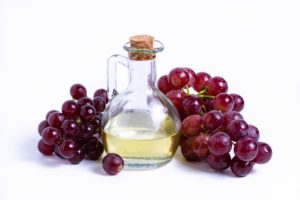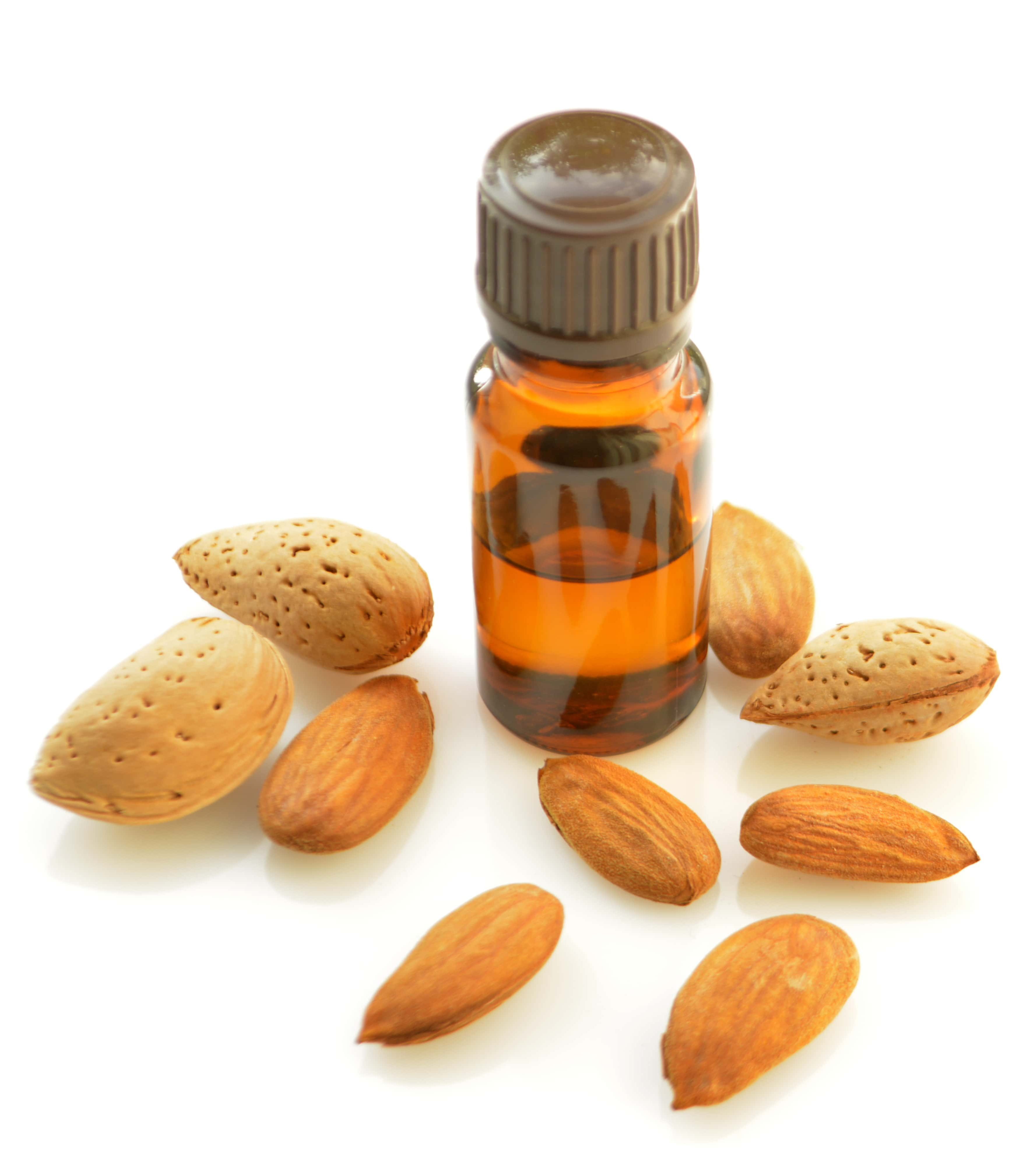Pesticides in Cooking Oils and Extracts
From olive oil to coconut extract, we analyzed 12 of the most commonly used oils and extracts for residual pesticides. Of the 12, four failed our analyses- including (not surprisingly) all of our citrus extracts (find out why in PART 1 of our case study).
Fruit and vegetable extracts, like cannabis extracts, are created by concentrating parts of the raw material using solvents such as ethanol, methanol or water. Pulps and sugars are removed to preserve the flavors and aromas of the fruit, making it easier to incorporate into baked goods and candies.
However, flavors and aromas aren’t the only elements being concentrated. If there are residual chemicals present on the raw material before extraction, those chemicals can become concentrated during the extraction process, resulting in an end product with even higher levels of contaminants than what it started with. The same applies for cannabis- if a trim sample passes a pesticide analysis but fails after the extraction process, it may be because pesticides that weren’t detected or were detected in non-failing amounts prior now make up a larger percentage of the product.
Our “Failing” Oils and Extracts
 Olive Oil
Olive Oil
Olive oil is produced by grinding olives and extracting the oil by mechanical or chemical means. Our sample of extra virgin olive oil was produced using pure, cold pressed olives and zero chemicals to refine it during the extraction process. However, the oil contained trace amounts (beneath our level of quantification) of chlorpyrifos, a category I pesticide banned in cannabis and cannabis-derived products.
Although several pesticides are registered in oil-producing countries for use on olive trees, information on the level and rate of residues found in the resulting oils is limited. However, it is clear that fat-soluble pesticides such as chlorpyrifos tend to concentrate during oil production, both after full coverage and bait spraying.
Chlorpyrifos use on olive groves in the United states is prohibited. However, according to the National Consumers League the US only produces about 5% of the world’s olive oil, while it imports 62% of oil from the Mediterranean (Europe, Spain, and North Africa). Europe has different regulations for olive oil production, meaning chemicals such as chlorpyrifos, which is used to control devastating olive fly infestations, may have been used on recent olive harvests. The discrepancies between permitted chemical residues in olive oil have been a long debated topic between the EU and the US, and as of January 31, The Standing Committee on Plants, Animals, Food and Feed (PAFF Committee) voted in favor of two draft Implementing Regulations that denied the renewal of approvals for chlorpyrifos and chlorpyrifos-methyl in the EU. However, the half life of chlorpyrifos residue in soil ranges anywhere from 2 weeks to a year, which suggests contamination is still possible even when use has ceased.
This is just one example of why it’s important for edible manufacturers to note where their raw materials were produced. Regulations differ from country to country – even with random checks made by the United States Customs and Border Protection on imported goods, contaminated products may still be able to pass through ports.
Lemon, Lime, and Orange Extracts
Our citrus extracts sourced from one of the most popular producers of baking additives in the US also failed for chlorpyrifos in amounts below our level of quantification. Category II pesticides fludioxonil, trioxystrobin, and malathion were also detected.
In traditional agriculture, chlorpyrifos is one of the most widely used organophosphate insecticides in the United States. Despite being banned for use on olive groves, it is still heavily used on crops such as corn, almonds, and fruit trees.
Chlorpyrifos belongs to a class of organophosphates chemically similar to a nerve gas developed by Nazi Germany before World War II. It’s essentially used as a neurotoxin to paralyze and kill insects, but has been found to disrupt brain development in fetuses and babies and affect reading ability, IQ and hyperactivity in children. A handful of states, such as Hawaii and New York, have prohibited the use of chlorpyrifos-based products, and the Obama administration attempted to phase it out completely. However, that motion was overruled by the Trump administration in 2019.
Due to this pesticide’s popularity and the fact that it isn’t going away anytime soon, edible manufacturers should be encouraged to source their fruits and fruit-derived products from harvests grown in states where chlorpyrifos is banned. These include Hawaii, New York, and, as of February 2020, California, with many states following suit. However, this does not guarantee chlorpyrifos will not be detected in fruits grown in these states as the chemical will take years to break down in the soil.
The other three pesticides we detected were fludioxonil, trifloxystrobin, and malathion. Fludioxonil and trifloxystrobin are both post-harvest treatments used to prevent mold and decay. It’s interesting to note that neither of these pesticides were detected on our citrus fruit samples in Part 1 of this study, leading us to conclude these chemicals were possibly concentrated along with the fruit flavors and aromas during extraction.
Malathion, like chlorpyrifos, is an organophosphate used to control sap-sucking insects. However, it is not commonly used in citrus fruit cultivation. It is entirely possible the grower may have applied the pesticide themself, but malathion is also used in public health mosquito control and fruit fly eradication programs. Depending on where the raw materials for these extracts were sourced (i.e. Florida, California) aerial drops of this chemical by local public health departments may have contaminated the product.
Our “Clean” Oils and Extracts
Coconut Oil and Coconut Extract
Our analysts did not detect any pesticides in our unrefined virgin coconut oil, nor the coconut extract. Although large amounts of post-harvest fungicides are used when transporting coconuts overseas, the coconut’s thick shell prevents the chemicals from leaching into the flesh and water. This study, conducted by Brazil’s Unesp Paulista State University, analyzed 15 coconut samples for 11 different pesticides with results also non-detect for each pesticide. Even when flavors were concentrated, the resulting extract we tested contained no residual pesticides. Generally, organic and conventionally-cultivated coconuts are one-in-the-same once cracked open.
If an edible manufacturer is having issues sourcing clean traditional cooking oils, coconut oil is a great alternative with far less risk of contamination!
Canola Oil and Vegetable Oil 
Our two vegetable-derived oils passed our pesticide analysis with zero analytes detected. However, it’s important to note that this was not a representative sample of every vegetable oil on the market.
Traditional vegetable oil is made by extracting oil from vegetable seeds- typically soybeans- using mechanical or chemical means (just like cannabis oil extraction!). Canola oil is created the same way using rapeseeds.
Conventional soybean cultivation utilizes numerous pesticides and herbicides. However, the three most common pesticides used by US cultivators – (aminomethyl)phosphonic acid, glyphosate, and pyraclostrobin – are not restricted or banned in cannabis products, and therefore not analyzed in our study. The next three most common- malathion, azoxystrobin, and chlorpyrifos- were analyzed, but with only 10% of soybean cultivators utilizing these chemicals we were not able to detect any of the three.
Canola and rapeseed are produced mainly in Canada, China and Western Europe. Production in the U.S. is currently concentrated in the upper Midwest in the Dakotas, however canola has been grown in many states across the U.S. on a limited basis.
The crop – once grown only sparingly to rest soils between grain harvests – must be intensively managed for farmers to attain the high yields they need to maximise profits, and that means high use of pesticides. Historically, farmers relied on neonicotinoids such as thiacloprid (cat. I) and imidacloprid (cat.2) to control pests from devouring their crop, but since 2013 the EU and Canada has banned such pesticides to help preserve bee populations. Growers worldwide are struggling to find a safe and effective alternative, with yields plummeting to a 14-year low in 2019.
 Grapeseed Oil
Grapeseed Oil
Our grapeseed oil sample contained trace amounts of category II pesticides boscalid, dimethomorph, and trifloxystrobin, at levels low enough to pass our pesticide analysis for cannabis edibles.
Pesticides applied to grape vines before harvest may concentrate in the grape seed due to their high oil solubility. In fact, studies show residue concentrations are higher in grape seed oil and grape seed meal than in the fruit and the marc.
Because grapeseed oil is a by-product of conventional wine grapes, this is especially concerning. According to the California Department of Pesticides Regulation, in 2017 29 million pounds of pesticides were applied to conventionally-grown wine grapes in California. That was a 5.4 percent increase from the year before, and trends indicate that number will continue to rise. While the most common pesticides used in wine cultivation are not restricted in cannabis, 260,000 pounds of category I and II pesticides, including chlorpyrifos, boscalid, and myclobutanil, were still used to treat vineyards in 2016. Conventionally-grown wine grapes received more pesticides than almonds, table grapes, tomatoes or strawberries.
Pure Vanilla Extract
Based on our research and results of this analysis, pure vanilla extract is one less ingredient you’ll have to worry about sourcing in regards to cannabis regulations. Because most vanilla cultivators are independent farmers in third world countries – with 80% of today’s vanilla grown in Madagascar – nearly all natural vanilla is grown without pesticides due to lack of resources and expense.
 Pure Almond Extract
Pure Almond Extract
Our almond extract also passed the pesticide analysis with no pesticides detected. Contrary to the name, almond oil is not commonly extracted from almonds, a good thing considering almond growers use numerous category I pesticides that could cause a cannabis edible to fail compliance.
Pure almond extract is made from three primary ingredients: alcohol, water, and bitter almond oil. The last is extracted from almonds or (more frequently) their kin, drupes, the botanical term for stone fruits such as peaches and apricots. The almond flavor comes from benzaldehyde, a substance in the kernels of drupes.
Mint Extract
Our mint extract sample contained none of the 66 pesticides we tested for, and we figured it wouldn’t- mint is commonly used as a natural pest deterrent itself. The pesticides that are used to protect mint plants are used sparingly, with only 8,687 pounds used in 2016. Of the 50 most common pesticides used in mint cultivation, only bifenazate- a category II pesticide- was also on the BCC’s list of restricted pesticides in cannabis products.
In our next study, we’ll examine the residual pesticides we found in common essential oils purchased from our local pharmacy. For oils we found in the “alternative medicine” aisle, you may want to think twice about how healing these products really are.
If you have any questions or concerns about the products you’re using to manufacture edibles, please reach out to us so we can help ensure your products make it onto the shelves.




